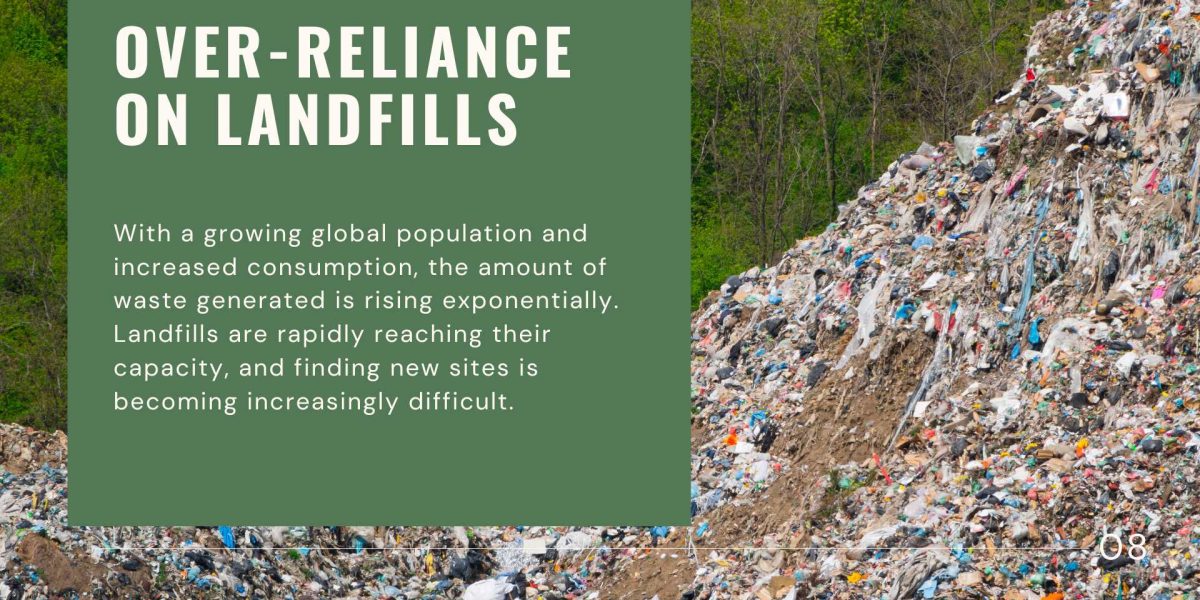Landfills have long been the default solution for managing waste, but the environmental impact of this practice is far from benign. Understanding what happens when everyone dumps waste in landfills is crucial for recognizing the urgent need for more sustainable waste management practices.

The Basics of Landfills
Landfills are engineered sites designed to isolate waste from the environment. They consist of a liner system to contain leachate, a leachate collection system, a gas collection system, and a cover to minimize the release of landfill gases. Despite these measures, the massive amounts of waste that end up in landfills pose significant environmental challenges.
Environmental Impact of Landfills
1. Soil and Water Contamination
One of the most immediate dangers of landfills is the potential for soil and water contamination. Leachate, the liquid that forms as waste decomposes, can seep through landfill liners and contaminate the surrounding soil and groundwater. This can lead to the spread of harmful chemicals and heavy metals, posing a significant risk to ecosystems and human health.
2. Air Pollution
Landfills are a major source of methane, a potent greenhouse gas that is 25 times more effective at trapping heat in the atmosphere than carbon dioxide. As organic waste decomposes anaerobically (without oxygen), it produces methane. If not properly managed, this methane can escape into the atmosphere, contributing to global warming and climate change.
3. Loss of Biodiversity
The creation of landfills often requires clearing large areas of land, which can destroy habitats and displace wildlife. Additionally, the leachate and gases produced by landfills can further degrade surrounding ecosystems, leading to a loss of biodiversity.
4. Human Health Risks
Communities living near landfills are at a higher risk of health problems due to exposure to pollutants. These can include respiratory issues, skin irritations, and even more serious conditions like cancer. The unpleasant odors from landfills also affect the quality of life for nearby residents.
Economic Costs
1. Management and Maintenance
Operating a landfill is an expensive endeavor. Costs include constructing and maintaining the landfill, managing leachate and gases, and monitoring the site for years after it has closed. These costs are often passed on to taxpayers.
2. Land Value Decrease
Properties located near landfills tend to decrease in value. This can lead to economic downturns in local communities, as people move away and businesses suffer.
The Waste Problem:

1. Increasing Waste Generation
With a growing global population and increased consumption, the amount of waste generated is rising exponentially. Landfills are rapidly reaching their capacity, and finding new sites is becoming increasingly difficult.
2. Recyclable and Organic Waste
A significant portion of the waste that ends up in landfills could be recycled or composted. Organic waste, which contributes to methane production, can be composted to create valuable soil amendments. Recycling reduces the need for raw materials and conserves natural resources.
1. Waste Reduction
The most effective way to manage waste is to prevent it from being created in the first place. This can be achieved through practices such as:
Eco-friendly product design: Designing products that use fewer resources and generate less waste.
Consumer awareness: Educating the public on the importance of reducing waste through mindful consumption and sustainable choices.
2. Recycling and Reuse
Recycling converts waste materials into new products, reducing the need for raw materials and conserving energy. Reusing involves finding new uses for items that would otherwise be discarded. Both practices are integral to reducing the volume of waste that ends up in landfills.
3. Composting
Composting is the process of decomposing organic waste, such as food scraps and yard waste, into nutrient-rich soil. This not only reduces the amount of waste in landfills but also produces a valuable product for agriculture and gardening.
4. Safe Disposal
Certain types of waste, such as hazardous waste, require special handling and disposal methods to prevent harm to humans and the environment. Proper disposal methods include:
Landfills: Modern, well-managed landfills are designed to contain waste securely and prevent pollution.

1. Recycling and Composting
By increasing recycling and composting efforts, we can significantly reduce the volume of waste that ends up in landfills. This not only conserves resources but also reduces greenhouse gas emissions.
2. Waste-to-Energy Technologies
Waste-to-energy (WTE) technologies convert non-recyclable waste into usable forms of energy, such as electricity or heat. This reduces the volume of waste sent to landfills and provides a renewable source of energy.
3. Circular Economy
Adopting a circular economy approach involves designing products for longevity, reuse, and recycling. This minimizes waste and encourages the sustainable use of resources.
4. Education and Policy
Public education and robust waste management policies are crucial for reducing landfill dependence. This includes implementing stricter regulations on waste disposal, providing incentives for recycling and composting, and educating communities on sustainable practices.
Conclusion
The environmental, economic, and health impacts of dumping waste in landfills are profound. It is imperative that we shift towards more sustainable waste management practices to mitigate these effects. By embracing recycling, composting, waste-to-energy technologies, and a circular economy, we can reduce our reliance on landfills and create a cleaner, healthier geosphere for future generations.


